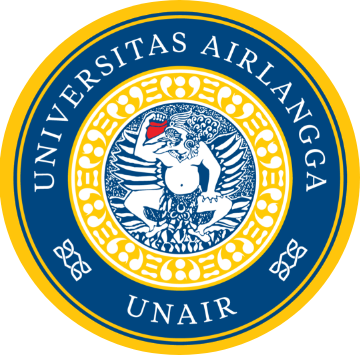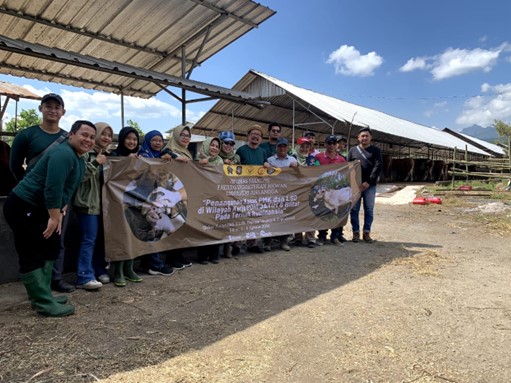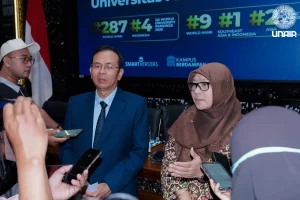UNAIR NEWS – Foot-and-Mouth Disease (FMD) and Lumpy Skin Disease (LSD) both entered Indonesia in 2022 and have yet to be eradicated. According to ISIKHNAS data as of August 3, 2024, FMD cases persist in 10 provinces, with 6,874 animals infected, while LSD affects 8 provinces with 4,018 cases. In Blitar Regency, FMD cases resurfaced from January to April 2024, but no cases were found in Blitar City in May. LSD was also detected in Blitar Regency in April 2024 and in Blitar City in June 2024.
In response, the Faculty of Veterinary Medicine (FKH) Universitas Airlangga (UNAIR) conducted an independent community service program on August 3-4, 2024. The outreach was carried out by four lecturers: Prof. Dr. Jola Rahmahani, Prof. Dr. Suwarno, Prof. Dr. Erma Safitri, and Dr. Kadek Rachmawati, along with four master’s students from FKH UNAIR: Drh. Supriyadi, Gabriel Sampe Pasang, SKH, Pitaloka Kurniasari, SKH, and Dyah Irfani, SKH.
According to the program chair, Prof. Jola Rahmahani, the knowledge-sharing session was conducted in the form of a seminar and discussion on August 3, 2024, from 6:00 PM to 10:00 PM WIB, featuring two speakers. The theme was “Handling FMD & LSD Cases in the Working Area of PDHI East Java 8 Blitar on Ruminant Livestock.” The seminar was held at Bu Mamik Restaurant and attended by around 100 veterinarians and paramedics. It was also attended by the Head of the Blitar Regency Livestock and Fisheries Office (Eko Susanto, MSi), the Head of the Blitar City Food Security and Agriculture Office (Drh Dewi Masitoh, MAgr), the Chair of PDHI East Java 8 (Drh Leo Sudilaksono), and the Chair of Paravetindo (Mas Dayat).
Prof. Suwarno, one of the speakers, emphasized that FMD and LSD must be addressed comprehensively through massive vaccination campaigns. The virological approach focuses on understanding the characteristics of the FMD and LSD viruses, which can be managed by preventing the disease through vaccination and implementing strict biosecurity measures with disinfectants that can destroy the virus structure. Furthermore, Suwarno highlighted the importance of early symptomatic and supportive treatment for infected animals, including the administration of vitamins and minerals. This treatment helps restore energy and maintain a strong immune system in the animals.
Meanwhile, Prof. Erma Safitri, an expert in reproduction, as the second speaker provided advice on handling reproductive issues in livestock. Following FMD and LSD outbreaks, many female cattle experienced reproductive problems, such as abortion, failure to exhibit estrus, and repeated breeding. These issues are detrimental to farmers, as they disrupt the expectation of annual calving. Providing complete nutritional feed and hormonal therapy can restore the reproductive function of the cattle, allowing them to reproduce as expected.
On August 4, the team continued with field visits to Cipto Mulyo Farm, a goat and sheep farm in Sanandayu Village, and a dairy farm owned by Perkebunan Gambar in Sumberasri Village, Nglegok District, Blitar. The activities focused on post-outbreak reproductive examinations of the livestock.
Pregnancy examinations on sheep were conducted using ultrasound equipment, revealing several positive pregnancies both physically and through ultrasound. While rectal and ultrasound examinations identified some positive pregnancies and others showed reproductive disorders such as repeated breeding, lack of estrus, and infertility caused by ovarian hypofunction and persistent corpus luteum (CLP). The treatment for these cases included providing nutritious feed and hormone injections.









